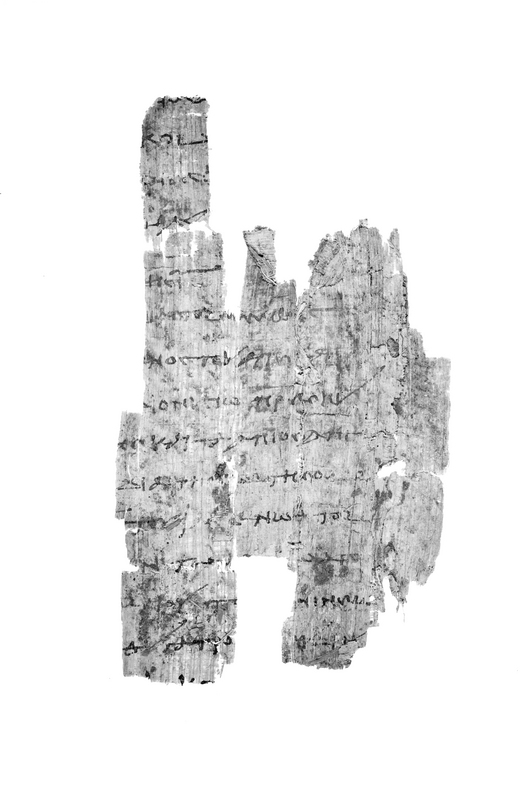How does modern technology help papyrologists?
Papyrus documents are often difficult to read or even unreadable to the naked eye. Some texts can become legible through infra-red photography. An even more recent technique is multi-spectral analysis, which can make visible traces of writing that have been washed away. Computer scientists are also attempting to virtually “unroll” papyrus rolls with the help of X-ray CT scanning techniques. Unfortunately, these techniques are not yet able to make all types of ink used in antiquity visible.
With the Naked Eye
The front of this papyrus possibly shows a list of crops. The back, shown here, contains the remains of either a private letter or a petition. Both sides of the papyrus are very dark, and very few letters can be deciphered.

Are papyrologists ever done with a papyrus text?


